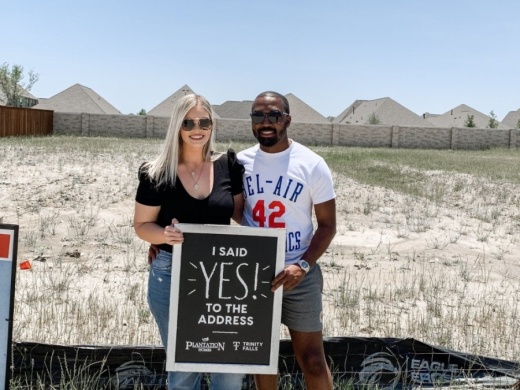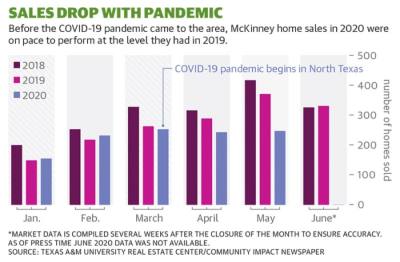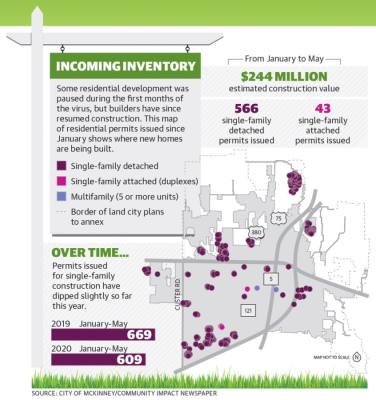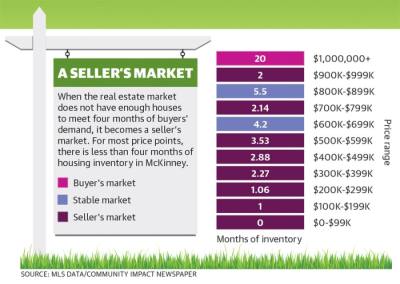It’s still a seller’s market, said Gisella Olivo, a McKinney-based Realtor with JP & Associates. She described a seller’s market as one that has less than four months of housing supply available for buyers currently in the market.
“There’s a limited inventory right now,” Olivo said. “For the $300,000-$399,000 price range, we only have about two months’ inventory.”
Data from the Collin County Association of Realtors reflected this trend as well. Collin County’s new listings for May are still lagging, with 15.5% fewer homes listed compared with the number in May from the year prior.
However, the year-over-year numbers for May are still better than those for April, which saw a 35.3% decline year over year, according to an association news release.
“In May, we saw more home sellers who were aware of the [Centers for Disease Control and Prevention’s] guidelines and who felt comfortable and appreciative of the precautions the real estate industry has implemented to ensure real estate transactions can be successfully and responsibly completed,” CCAR President David Long said in a statement.
Robert Ditthardt, general manager of the growing housing development Trinity Falls in McKinney, said that after the initial slowdown, there has been a definite upturn in recent weeks. He referred to this trend as “the Nike swoosh,” saying the visual is a fairly accurate representation of the market’s performance since March.
“In the first couple of weeks after the shelter-in-place orders were issued, we saw a decrease in sales and a temporary decrease in construction of our speculative homes,” Ditthardt said. “And then as time went on, the builders realized that to have finished homes completed, it was going to be a benefit to have that inventory ready.”
He said the Trinity Falls neighborhood is up 60% in sales from March to mid-June year over year.
While McKinney has seen an uptick in sales, Texas and the nation have fared differently. The state had existing home sales decline for the third month in a row, and Texas’ existing home sales sank 32% year over year, according to May data from the National Association of Realtors and Texas A&M Real Estate Institute.
Pending home sales in the nation, however, mounted a comeback in May, according to data from the National Association of Realtors.
“The outlook has significantly improved, as new home sales are expected to be higher this year than last, and annual existing home sales are now projected to be down by less than 10%—even after missing the spring buying season,” said Lawrence Yun, chief economist for the National Association of Realtors, in a news release.
More interested buyers
Other McKinney builders confirmed the “Nike swoosh” rebound described by Ditthardt. While the coronavirus pandemic slowed real estate activity in March and April, Bryan Swindell, division president of Pulte Homes, said home construction made a comeback in May.
“May was a big pickup. Really, we’ve pretty much recovered what we lost in April,” Swindell said.
The Dallas-Fort Worth real estate market overall has fared well through the pandemic, said JP Piccinini, CEO and founder of JP and Associates Realtors. There is more demand for homes in recent weeks as stay-at-home restrictions loosened and interest rates for new homes plunged to record lows, he said. In addition, buyers also had the time to consider the kind of home they wanted should they face quarantining again.
With the coronavirus pandemic at the forefront of buyers’ minds, the people looking for homes are serious shoppers, said Kelly Rudiger, a Coldwell Banker Realtor who serves the McKinney area. While summer has traditionally been the busy season for real estate, this year it started in the spring with more people looking at new houses online from their homes, she said.
“Relocations started early because they had no real reason to stay where they were,” Rudiger said.
This was the case for Dallas-based couple Martin and Lisha Marshall. The two of them had been talking about purchasing their first home since March of last year, they said, but took the conversation more seriously once the pandemic hit.
“On the days where we couldn’t do much, we just would get out and just drive around and look at different neighborhoods from the car,” Lisha Marshall said.
Following weeks of searching, the Marshalls selected a new home in Trinity Falls and are going through the process of customizing their house. They pivoted from plans of getting a new condo in Dallas and opted instead for a house that would give them more space should they need to quarantine again.
“If we’re going to be inside of a place that we have to spend a bunch of time, it might as well be one that we absolutely love and where we have plenty of space,” Martin Marshall said.
The Marshalls opted to build their home, but inventory for homebuilders is slimmer than usual Piccinini said. And there are not enough existing homes on the market to support the serious buyers and meet their needs, he said.
However, the opposite is happening in the multifamily sector, Piccinini said. Realtors are now seeing what they refer to as a “bubble” in this market, he said. Similar to the Marshalls, buyers are more interested in single-family homes, leaving condos and apartments up for lease.
As a result, single-family rentals in the Dallas-Fort Worth area are “almost nonexistent,” he said, and homes for sale in the first-time homebuyer price range of under $300,000 are also in short supply.
Effects of low inventory
Buyers looking for a new home in this market need to move fast, Olivo said. While most people typically go online and start looking for a new home, she advised buyers to first get prequalified for a home loan. They also need to get a Realtor who is familiar with local trends, such as the area’s low inventory.
“It’s a great market because the interest rates are so low right now,” Olivo said. “But when you’re ready, you have to be ready, because when you find it [your house], then we’re going to go for it.”
Houses that are less that $300,000 are seeing numerous buyers look at them, developing into multiple-offer situations, Realtors said. In some cases that competition is driving up prices, and buyers need to be prepared for that, Piccinini said.
“You’d think that home prices would crash and tumble, ... but obviously, the economics of supply and demand helped prices go up with the demand,” he said. “We saw prices increase by 3% year over year in the month of May.”
Realtors forecasted a strong July for the real estate market, but the condition of the long-term market is still in unknown. With coronavirus cases increasing, Piccinini noted local governments have not shut down all businesses and services as they did earlier this year, and Realtors are continuing to see “a tremendous interest as we would expect for the summer months.” The year could finish close to what was originally forecasted, experts said.
“It’s anybody’s guess what the market long term will do,” Swindell said. “But June has been an incredible month for us.”








